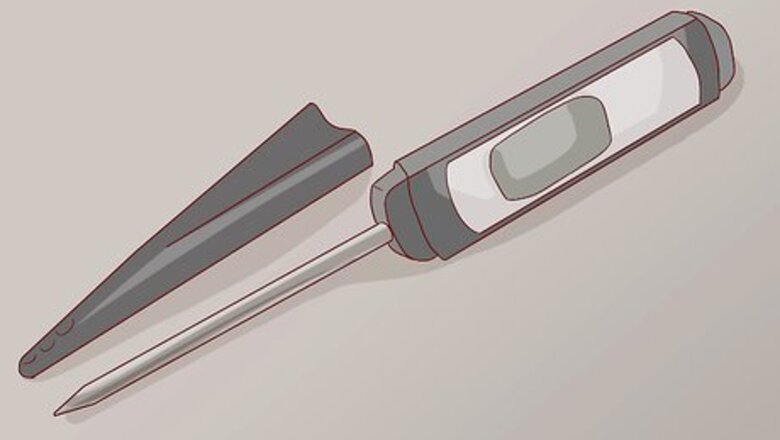
views
Evaluating Different Types of Thermometers
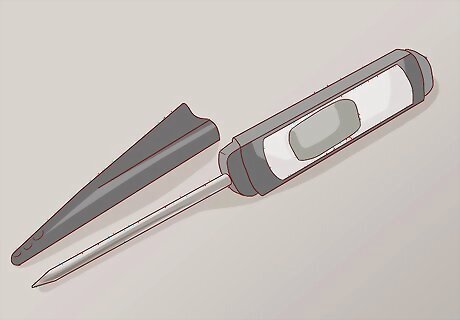
Choose a digital thermometer. Non-digital "dial" thermometers—sometimes called bi-metallic stem thermometers—are no longer your best option. Over time, the metal on these instruments expands and contracts, causing the inner workings to shift and show an incorrect temperature. Instead, digital thermometers are easily the best choice. They are easy to read, remarkably accurate, and available in a wide variety of styles. There are many types of digital thermometers, ranging in price from as little as $5 to well over $100. Instant read thermometers, infrared thermometers, and thermocouple readers are all available in digital models.
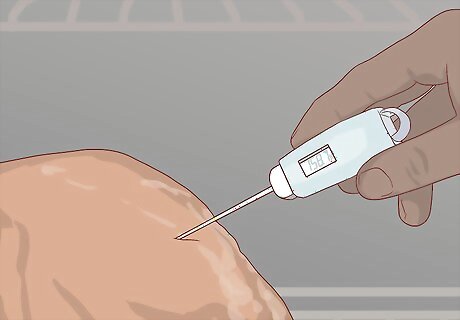
Try an “instant read pocket thermometer.” A common, effective, and relatively inexpensive option is an “instant read pocket thermometer.” These digital thermometers give an instant temperature reading by inserting a metal probe into the food. A good option is the Classic Super-Fast Thermapen for $79 (from ThermoWorks or Amazon). A less expensive, but still great, option is the Super-Fast Pocket Thermometer (RT600C) for $19 (from ThermoWorks or Amazon).
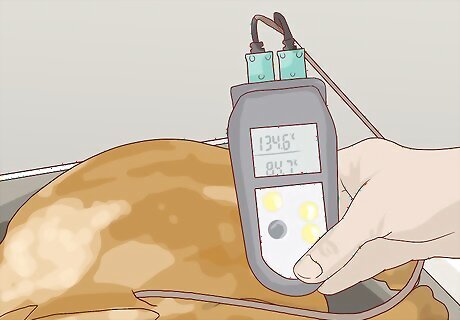
Experiment with “thermocouple readers” and probes. If you’d like something a little more high-end, you may prefer to use a thermocouple reader and probes. Thermocouple readers offer flexibility and accuracy by recording temperatures at multiple locations on the food, by way of thermocouple probes. A good choice for a reader is the Therma Differential Thermocouple Meter for $129 (from ThermoWorks). The probes are sold separately. A good choice for these is the Stainless Steel K-Type Thermocouple Insertion Probe (set of 2) for $11.99 (on Amazon).

Consider an infrared thermometer. An infrared thermometer can provide an accurate temperature reading without ever touching the food. Simply point the infrared gun at various points on your food to get temperature readings. This is a great option is you’d like to keep the look of your food intact. A good option is the Food Safety Infrared (IRFS) for $69 (from ThermoWorks or Amazon).
Choosing a Meat Thermometer
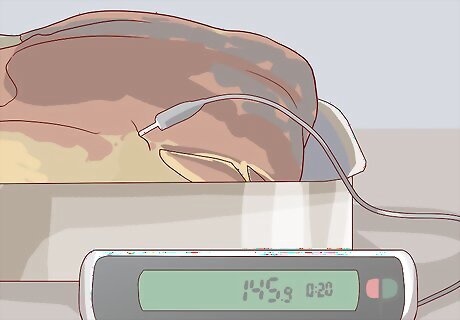
Try a “leave-in digital meat thermometer.” Leave-in thermometers are an excellent choice for slow cooking meat and poultry (as when roasting a turkey). Simply insert a metal probe into your meat and leave it there while cooking. A digital display outside the oven conveys the temperature, by way of a thin cord or via Bluetooth. A good choice for this is the Chef's Digital Leave-In Meat Thermometer for $39.99 (from Oxo).
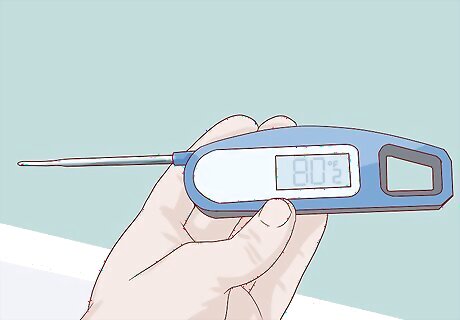
Choose an “instant-read digital meat thermometer.” When it comes to instant read meat thermometers, there are two basic designs. One is wand with a bulb at the end. The other is a hinged, folding probe. The second design is a bit more expensive, but offers a more sophisticated probe with faster results. A great choice for a hinged instant-read digital thermometer is the Lavatools Thermowand for $28 (on Amazon).
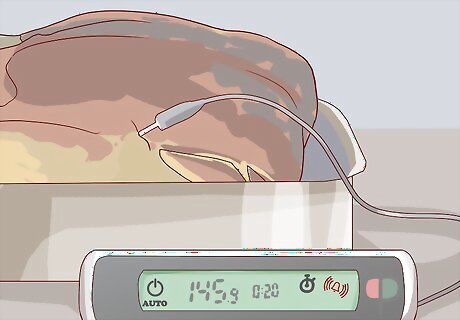
Look for additional features. Different types of meat thermometers will offer additional features. Generally, the more features a thermometer has, the more expensive it will be. So consider whether or not any of these following features will be useful to you: Audible alarm/alert (that tells you when meat is ready). Auto shut-off (to conserve battery when not in use). Pre-set meat temperature (according to USDA guidelines). Programmable timer (that you can set manually). Back-light (this enables you to see the display in dark rooms or outdoors at night).
Determine How Much You Want to Spend

Assess how often you’ll use it. Food thermometers can range widely in price, from as low as $5 to as much as $150. The number one factor in how much you spend should be how often you cook. If you will be using the thermometer often, it is worth it to spend a little more.
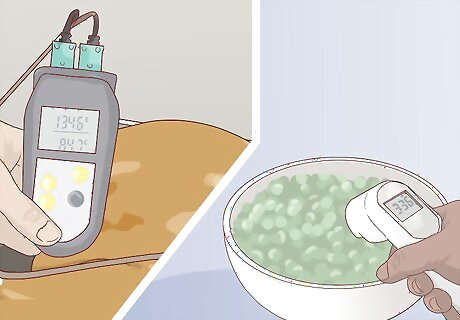
Determine what it will be used for. If you will be cooking a great deal of poultry or meat, a good quality thermometer is essential for food safety. If you will be cooking only vegetable dishes and baked goods, you can probably get away with a less expensive model.

Decide on a budget. After considering how often you’ll use it and what it will be used for, you must finally consider how much money you have available to spend. All three of these factors taken together, will help you come up with a budget. Armed with this figure, you can best select the thermometer that suits your needs.












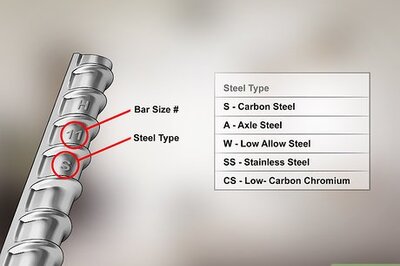







Comments
0 comment